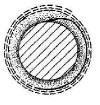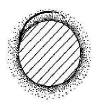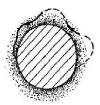|

Lesson Objectives
In this tutorial you will learn the basic
steps for Deorbiting Procedures. The following subjects will be presented.
-
Concept
-
Using A Navigational Beacon
-
Instrument Set Up
-
Space craft configuration
-
Deorbiting Procedures
-
Emergency Reentry Procedures
-
Completion of the Maneuver
-
Checklist Summary: Deorbit and Reentry
Suggested Reading Topics:
-
4.1.7 Returning from Space (PDF)
-
ORBITER Space Flight
Simulator Manual - 2006 Edition Sections: 16,
19.3
-
Delta-glider
Operations Manual
Section 1: Concept
Deorbiting is required when you want to land on the surface of planet, moon,
or asteroid. The location on the surface of a planetary body could be a space
port landing pad, runway, or in rough rugged terrain. Deorbiting utilizes a
combination of orbital maneuvers to reentry a space craft, such as: Orbital Plane
Alignment, and Transfer Orbits.
Section 1.1 Types of Reentry:
Reentry and landing on non-atmosphere planets is fairly
straight forward. The governing equations of flight are simple when calculating
the flight path. However, when aerodynamic factor are taken into account,
the flight path of objects can become quite a bit more complicated and
interesting. The types of reentry can be broadly categorized into several
groups.
-
Aero Braking - is technically not a reentry, but use the
upper atmosphere of a planet to adjust the orbit of craft during space flight.
As a ship enters the upper atmosphere it can use aerodynamic forces to change it
flight path saving fuel and extending the mission life, Figure 1.1. It can also
have a disastrous affect, if you enter to shallow you can skip off the
atmosphere and head of into space in an uncontrolled manner.
-
Aero Capture - is a non-reentry maneuver that is used to
transform a hyperbolic orbit into an elliptical one. This maneuver can be used
to put a space craft into a parking orbit around a planet. The aerodynamics a
planets atmosphere can used to change the eccentricity of the transfer orbit to
a circular orbit. This maneuver has the advantage of saving fuel during the
insertion stage of an interplanetary mission.
|
 |
|
Figure 1.1 Aero Braking |
|
 |
|
Figure 1.2 Decay Reentry |
-
Glide Reentry - is when a space craft use aerodynamic forces to land. Most
all space craft are designed to have some lift during reentry. The range or
distance a space craft will glide depends on the lift to drag ratio of the
vehicle (L/D). There is an optimum value of (L/Dmax) that will give
the farthest distance that can flown, it the point where the spacecraft will
have the greatest amount of lift, with the least amount of drag, Figure 1.3
|
 |
|
Figure 1.3 Glide Reentry |
|
 |
|
Figure 1.4 Skip Reentry |
Section 1.2 Reentry and Anticipation Angle
The reentry angle is the angle between the local horizontal and the velocity
vector of a reentering space craft, Figure 1.5. It will determine the flight
path that we will take to land on the surface of a planet. The angle is measured
from the local horizon, or pilots point of view.
|
 |
|
Figure 1.5 Reentry Angle5 |
The reference altitude is the altitude that the space craft will mostly
likely encounter the atmosphere of the planet. For planets that have no
atmosphere the reference altitude is zero.
The reentry anticipation angle is the angle from the point where the space
craft reaches the reference altitude and the target base, or landing site,
Figure 1.6.
|
 |
|
Figure 1.6 Reentry Path6 |
Section 1.3 Base Encounter
The orbit encounter gives the pilot astronaut four options on how to sync the
orbit of the space craft to a particular landing site, more details are given in
the BaseSync Lesson. The four types of orbital encounters are:
Latitude Mode:
Shows the closest intercept points where the space craft
orbit crosses the landing sites latitude. This mode can be used for fast
rotating planets such as Mars or Earth, when the inclination between the and
target's latitude is small, Figure 1.7
|
 |
|
Figure 1.8 Latitude Mode1 |
Closest Passage Mode:
Gives information for the point of closes passage to the
landing sight. There will be only on point in an orbit that will have the
minimum distance to the target base or landing point, Figure 1.9.
|
 |
|
Figure 1.9 Closest Passage Mode2 |
Apoapsis / Periapsis Mode:
These modes use the ships apoapsis or periapsis to adjust the
orbital plane for base synchronization.
Section 2: Using A Navigational Beacon
A Navigation Beacon can be used as target when moved to a
landing site or runway. It can provide useful information for the
navigation systems when selected as a target in the different MFD modes. It will
serve as a back up in case the BaseSync MFD fails. Prior
to starting this lesson you should have completed the lesson "Creating A
Navigation Beacon". For illustration purposes we moved the Beacon to the end of
runway 31 at Cape Canaveral, Florida, our desired landing location. The Beacon can easily be moved to any location on planets
surface that you choose to navigate too Figure 2.1, and 2.2.
|
 |
 |
|
Figure 2.1 Beacon Created |
Figure 2.2 Move to desired
landing location |
Section 3: Instrument Setup
Step 1 - Supplemental Navigation Using the Beacon
We will use the Beacon, and the information we get from it, to
supplement our primary navigation aid which is the BaseSync, and AeroBrake MFD
modes. Use the procedures in the Emergency
Procedures Lesson if you would like to back up your primary navigation
instruments using the "Beacon". You can skip this section if you do not want to use the Beacon as
back up.
I find it useful to display the docking information for the
Beacon on the HUD because it gives a visual reference to the landing site as well
as direction and distance information. A brief description of how to set up the
docking mode is given here.
Follow the steps listed below to program the Docking MFD.
Select the Docking Mode and then program it following the steps bellow:
-
Selecting the target button (TGT).
-
Select the "Enter by name" command.
-
Type in the name "Beacon" in the dialog box as
the target
-
Select the HUD button in the Docking Mode so that
the HUD system will be slaved to display the target information, Figure 3.1. This
will display direction and distance information on the HUD
|
 |
|
Figure 3.1 Slave the HUD
to the Docking Mode |
Step 2 - Base Synchronization and Aero braking MFDs.
The BaseSync MFD is the primary navigation aid used during
reentry. You should have already completed the Base Synchronization and Aero
Breaking Tutorials. It can be used to align and synchronize your orbit with a
target landing site or base. Use the following procedures to set up the BaseSync
and AeroBrake MFDs.
BaseSync MFD
-
Selecting TGT and enter the base, or longitude and latitude
of landing site, Figure3b and 3c.
-
Select the E/D Equator or Direct Mode. Use the Equator Mode
for fast rotating planets. The Direct mode can be used for all reentry
situations.
-
Cycle through the encounter mode to determine which reentry
path is optimal for your current orbit. This will typically be the one that can
be accomplished with the fewest orbit or has the smallest relative inclination.
AeroBrake MFD
-
Select TGT and enter the landing base, Figure3.2 and 3.3.
-
Select the PG to map mode.
-
Select the HDv and enter the hypothetical delta v if
necessary.
|
 |
 |
|
Figure 3.2 Selecting Targets |
Figure 3.3 Selecting Encounter
and Direct modes |
Use the following checklist to ensure that the flight instruments are set up
correctly.
Section 4: Space Craft Configuration
Before we can reentry the atmosphere of a planet we need to configure the
space craft so that will not burn up due to heating. Follow the Deorbit
Procedures Check List to ensure that all of the airlocks, landing gear, and
radiator are properly configured and stowed, Figure 4.
|
 |
|
Figure 4 Reentry Configuration |
Complete the Space Craft Configuration items on the Deorbit
and Reentry Instrument Setup Checklist
Section 5: Deorbiting Procedures
Reentry is affected by several crucial elements: heading,
pitch attitude, delta v, ballistic range, atmospheric conditions, and engine
burn time. These factors will determine what kind reentry you have. The accuracy
to land at a specific point depends largely on your ability to hold these
parameters. The calculations to determine your heading, pitch altitude, delta v,
and engine burn time are tedious. These calculations are simplified through the
use of appropriate performance charts referrer to Mission Planning Lesson. Your
work load as a pilot astronaut is greatly reduced by thoroughly filling out a
flight log for deorbiting. Using a flight log will help you gauge your
performance and flight path by comparing into the predicted values in the
performance charts. It will also help you use your fuel efficiently. As part of
your pre-deorbiting procedures you should complete a Mission Flight Log.
Reentry require four crucial steps depicted in Figure 5.1:
-
Align the space craft orbit and synchronizing with the
landing site or space port. This is accomplished by firing the main engine
normal or anti-normal in the orbital plane to adjust the inclination for the
type of encounter that is desired.
-
Once aligned we must then fire the engine in a retrograde
orientation to set the space craft on a reentry path that will enable it to land
at the designated landing site
-
During reentry we must turn prograde and hold an angle of
attack that will slow the space craft down as it pass through the atmosphere of
a planetary surface using aerodynamic braking.
-
Finally we must transition from reentry to atmospheric flight
using aerodynamic lift or non-atmospheric flight using the hover thrusters
|
 |
|
Figure 1a Deorbit/Reentry
Flight Profile |
Step 1 - Set up flight instruments and configure space craft
See Section 4 for details
Step 2 - Align Orbital Plane using BaseSync MFD
Once we have properly configure the flight instruments we can now proceed
with deorbiting the space craft. Start by aligning the space crafts orbital
plane with the orbital plane of the landing sight using the BaseSync MFD, Figure 5.2 and 5.3. The
procedures are similar to the ones outlined in the Align Orbital Plane
Lesson. One major difference is that the landing site is fixed to the surface of
the planet and moves as the planet rotates. As the landing point moves it will
create an Orbital Alignment Drift (OAD), Figure 5.4. The BaseSync MFD will
correct for the OAD. Ideally you will want to complete the deorbit procedures
in one or two orbits any more than that and the OAD will be too great and you'll
have to start all over again with the alignment procedure.
-
Rotate the space craft Normal or Anti-normal as indicate
-
Select the Encounter mode (ENC), and Equator/Direct Mode
(E/D) to the desired setting
-
Fire the main engine until the Plc time reads zero
-
The Relative
Inclination (RInc) should read 0 degrees by the time your done.
-
The map screen in the AeroBrake MFD should show your orbit intersecting the landing site
|

 |
 |
|
Figure 5.2 Align Orbital Planes |
Figure 5.3 Orbital Planes Aligned
with landing site |
|
 |
|
Figure 5.4 Orbital Alignment Drift |
Step3 - Deorbiting The Spacecraft
Once the orbital plane is align and and synchronized with the
landing site you can then proceed with deorbiting the space craft. You can make
fine adjustments to the orbit using the Pop Can maneuver to correct for the relative
inclination angle (See Pop Can Maneuver Lesson for more details).
After aligning and sync with the landing
site, roll the spacecraft retrograde in preparation for deorbit burn. The space
craft needs to decrease its orbital speed in order to intersect the landing
site. To do this use the Deorbit Program DEO to calculate when, where, and how
much Delta V is need for reentry.
-
Select the DEO program.
-
Enter the reentry angle (ANG), anticipation
angle (ANT), and altitude that you will encounter the atmosphere of the planet
(ALT), Figure 5.5.
-
Roll the space craft retrograde.
-
Fire the main engine deorbit reentry point,
Figure 5e.
-
Rotate prograde.
|
 |
 |
|
Figure 5.6 Program DEO |
Figure 5.7 Fire engine at
deorbit reentry point |
|
 |
|
Figure 5.8 Roll Prograde |
Complete the Deorbit Procedures Checklist Items:
Step 4 - Pop Can Maneuver
Once you are satisfied with the engine burn to deorbit roll
the spacecraft prograde and perform the Pop Can Maneuver. The Pop Can Maneuver is used to
make small correction for the
final alignment of the orbit to landing phase. This can be accomplished by keeping the nose
pointed prograde towards the landing site and rolling the space craft normal or anti-normal such that the
hovering thruster can be use to correct the Relative Inclination (RInc), see
Figures 6.1 and 6.2.
|


 |
 |
|
Figure 6.1 Pop Can Maneuver
Normal and Anti-Normal Position |
Figure 6.2 Orientation2 |
You can also use the Pop Can maneuver to
adjust the impact point (red square) at the landing site by firing the engines
radial inward (-r) or radial outward (+r).
Step 5 - Reentry Interface Procedures
Now that we are aligned with our desired landing site we can prepare for
reentry. There are many factors that will affect your reentry performance.
We must take into consideration whether the reentry will require lifting or
non-lifting techniques.
For a lifting reentry we will have to take into consideration the atmospheric
conditions of the planet that we are landing on. Lifting reentry requires a
transition from the vacuum of space to smooth stable aerodynamic airflow over
the wings. Heating consideration must also be taken into account, too step of
reentry angle and our space craft will burn up: too shallow and our space craft
will skip like rock off of the atmosphere back into space.
Non-lifting reentry do not have these conditions that we would have to worry
about because of the lack of atmosphere around a planet. In either case it is
important that we configure the space craft correctly for the type of reentry
that we will be performing. The following checklist can be used to configure the
space craft correctly.
The trim should be set to zero and adjust our pitch attitude
to a 40 degree angle of attack. With spacecraft now in its proper configuration
we now must make a GO, or NO-GO, decision. If we have to abort reentry we fire
the main engines and climb back into orbit. This would not be possible with the
shuttle since it main engine do not have the capability of an orbital-go-around.
We would have to abort reentry if our orbital speed is to
fast, reentry angle to steep, or relative inclination to great, this would
be cause for a NO-GO decision. At the reentry interface with the atmosphere the
nose of the space craft should be pointing in the direction of flight
(Prograde), if not the aerodynamic force will cause it to tumble and burn up.
|
 |
|
Figure 6.3 Angle of Attack |
In this example the spacecraft is reentering the Earth's atmosphere to land
at Cape Canaveral. At about 80 kilometers is when the space craft will start to
encounter the atmosphere and aerodynamic forces would take over. If the space
crafts pitch attitude is to high it will climb back up if it is too steep, or
nose down, it will burn up, Figure 6.4. For a lifting reentry, turn off the RCS
thruster once the space craft is stable and utilize the aircraft flight controls.
When the space craft is at an appropriate altitude, 3000 ft to 5000 ft above the
ground, engage the Hold Altitude
(Hold Alt) function and deploy the airbrakes if necessary to slow down, Figure
6.4 and 6.5. The hover engines may come on to hold altitude. When the airspeed reaches about 200 m/s to 600 m/s, retract the
airbrake and descend to 10 kilometers, or an appropriate altitude, to set up for
the approach to land on the runway, landing pad, or landing site.
For shallower reentry angles the techniques are complete
different.
|

 |

 |
|
Figure 6.4 Delta Glider Reentry |
Figure 6.5 Use the Auto Level
and Hold Altitude function |
|
 |
 |
|
Figure 6.6 Turn the RCS thruster
off once the space craft is stable. |
Figure 6.7 Deploy the Airbrakes
to slow down |
Complete the Reentry Procedures Checklist Items:
Sections 7: Emergency Reentry Procedures
As an alternative to use the Base Sync and Aerobraking MFDs, it is possible to
reentry use the Transfer, MAP, and Orbital MFDs modes. See the Emergency Reentry
Procedures Lesson for further details:
Section 8: Completion of the Maneuver
The Deorbit and Reentry procedure is complete when you have successfully
passed through the atmosphere of the planetary body and have set up for the
approach to land. The elements for reentry are to align the orbital planes, set
a range to fire the main engine and to enter the atmosphere at the appropriate
reentry angle.
Section 9: Checklist Summary: Deorbit and Reentry
Listed below is a summary of the check list
used in this lesson. A check list provides using abbreviated
steps to help remind you of the action items that you need to take. They are
listed here as a quick reference guide and are sited through out this lesson.
Citation:
Pictures:
1-Orbiter Space Flight Simulator, 2006 Edition User Manual,
Martin Schweiger, pg 67-68
2-Orbiter Space Flight Simulator, 2006 Edition User Manual,
Martin Schweiger, pg 47
|